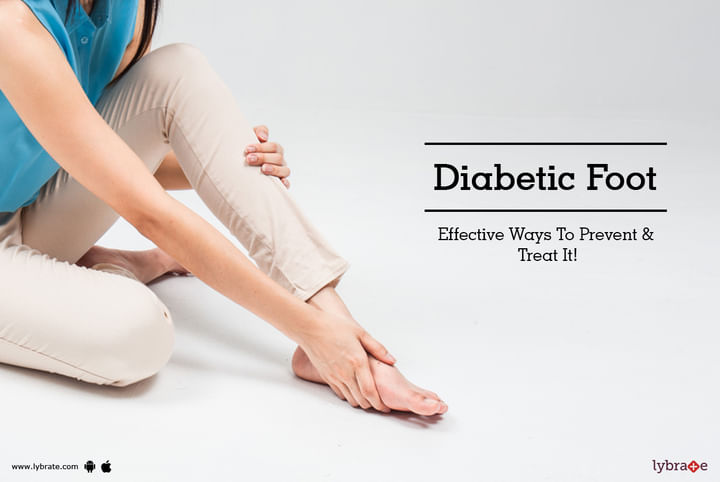Get the App
For Doctors
Login/Sign-up
Last Updated: Oct 23, 2019
BookMark
Report
Diabetic Foot - Effective Ways To Prevent & Treat It!
Diabetes alters the metabolism and functioning of almost entire body system. The most important targets are the circulatory and nervous system, leading to peripheral vascular disease and neuropathy. Diabetic foot is the result of a combination of these two factors in the feet – altered/reduced blood flow to the feet combined with reduced sensation.
- Neuropathy: When the sugar levels are poorly controlled, then the nerves in the legs are damaged, leading to reduced or absence of sensation. The patient cannot feel pain/heat/cold. Sensory neuropathy causes loss of protective sennsation leaving the foot at risk to repetative unnoticed trauma.
- Peripheral vascular disease: The blood vessels which are away from the heart are affected, leading to poor blood flow from the legs to the heart. Proper blood flow is essential for overall health, and when this is affected, the peripheral foot health is affected.
Some of the common foot problems encountered in diabetics are listed below:
- Fungal infections: Whether a person wears shoes regularly or not, they become more prone to fungal infections. The nails become discoloured, brittle, and break off. They are difficult to treat and may require oral medications.
- Ulcers: Diabetic ulcers are very common. The combined effect of reduced sensation and reduced blood flow leads to ulcers, which are not painful (due to lack of sensation) and therefore are ignored and not treated promptly. They can progress and become severe, even sometimes leading to amputation. Fungal ulcer are most common in between toes and in creases of a diabetic patients
- Corns: Diabetics are more prone to develop corns which are thick masses of skin near the bony area of a toe. This could be in areas where the shoes rub against the toes or between the toes where there is a lot of friction. Home care includes smoothing it with a pumice stone. The person should not try to remove them on their own. Warts, bunions, ingrown toenails, hammertoes, etc., are also very common in diabetics.
Prevention/Treatment:
- The first and most important step is to monitor and regulate the blood sugar levels within ranges ideal for you.
- Warm water to be used for washing feet, and then to be dried well, to not leave a moist area between toes
- Regular feet care to check for blisters, ulcers, wounds, etc.
- Check toenails for overall health
- Preferably wear closed toe shoes
- Wear stockings or socks and shoes that fit well
- Moisturise the skin well to avoid drying
- Avoid exposing feet to extreme weather
- Quit smoking
- Ensure blood flow is maintained by not standing or sitting for prolonged periods and with regular exercise
In case you have a concern or query you can always consult a specialist & get answers to your questions!



+1.svg)
